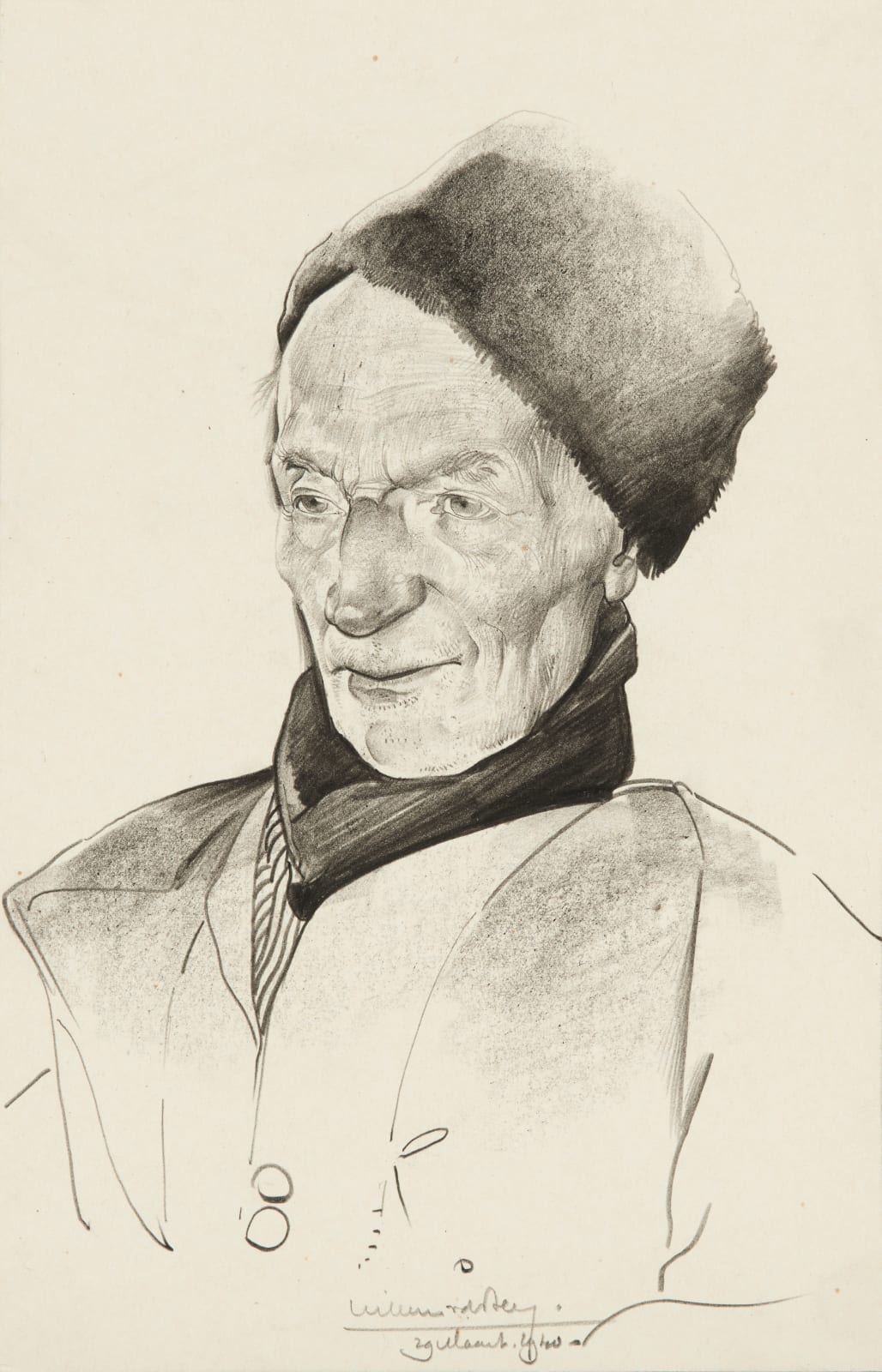Willem van den Berg (1886-1970)
Volendammer (Grote Frerik), 1940
Black pencil on paper
9⅞ x 6¼ inches (24 x 16 cm.)
Signed & dated 'Willem vdBerg. 29 Maart 1940-'
Sold
Willem van den Berg was born on February 16, 1886 in The Hague, where he first trained with his father Andries van den Berg, a painter, printmaker and art teacher....
Willem van den Berg was born on February 16, 1886 in The Hague, where he first trained with his father Andries van den Berg, a painter, printmaker and art teacher. Van den Berg enrolled at the local Academie voor Beeldende Kunst and took study trips to Belgium, Italy, England and France, where he worked with the Barbizon artists. One of his paintings was exhibited at the Jeu de Paume in Paris in 1926. In 1935, Van den Berg exhibited at the Art Institute of Chicago and continued to exhibit internationally throughout his career. By 1938 he moved to Amsterdam, where he became the director of the National Academy of Fine Arts.
In the late nineteenth century, Volendam had become one of the biggest artists’ villages in Europe. Like Signac, Renoir and Picasso, Van den Berg was not only attracted to the surroundings of the colorful fishing village on the former Zuiderzee sea, but also to its inhabitants. The local fishermen, their faces showing endurance and hardship across all seasons, became a source of inspiration for Van den Bergh throughout his career. The sitters are local fisherman, portrayed in the traditional costume with fur hat. The present drawing is one of Van den Bergh’s most popular model: Frerik Schokker (1857-1943), also known as Grote Frerik. Since many family members in Volendam have the same first and last names, people were usually identified by descriptive nicknames.
